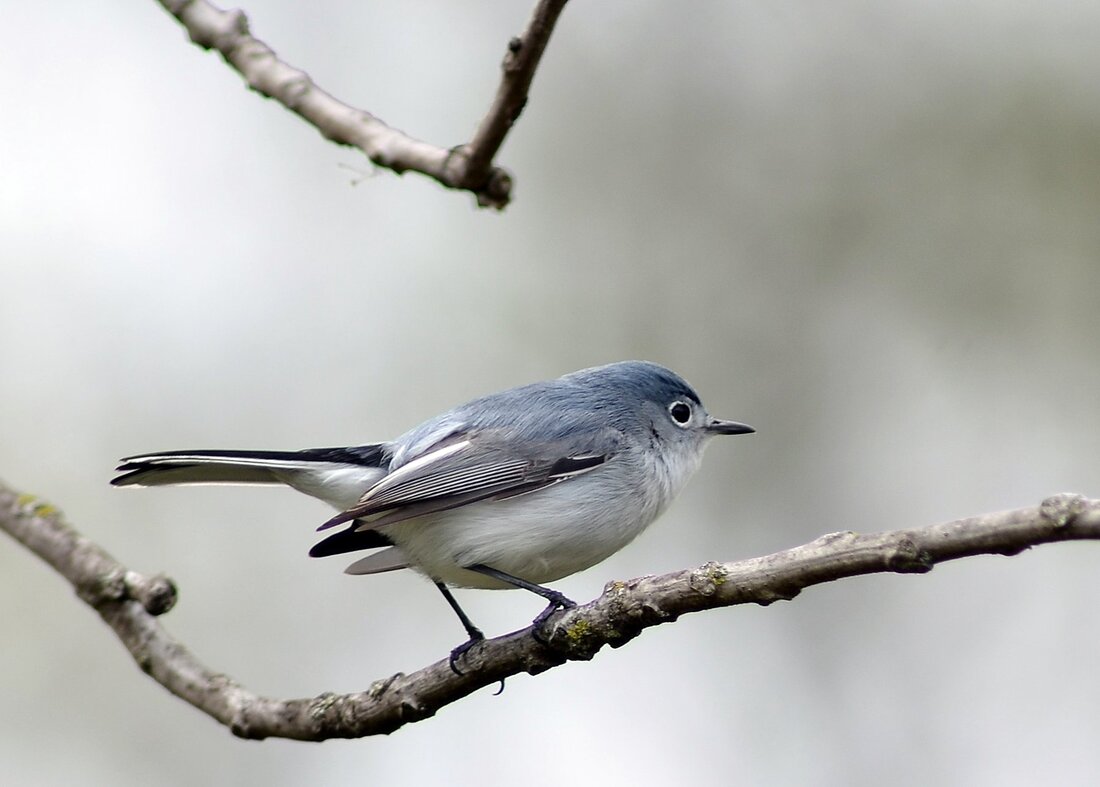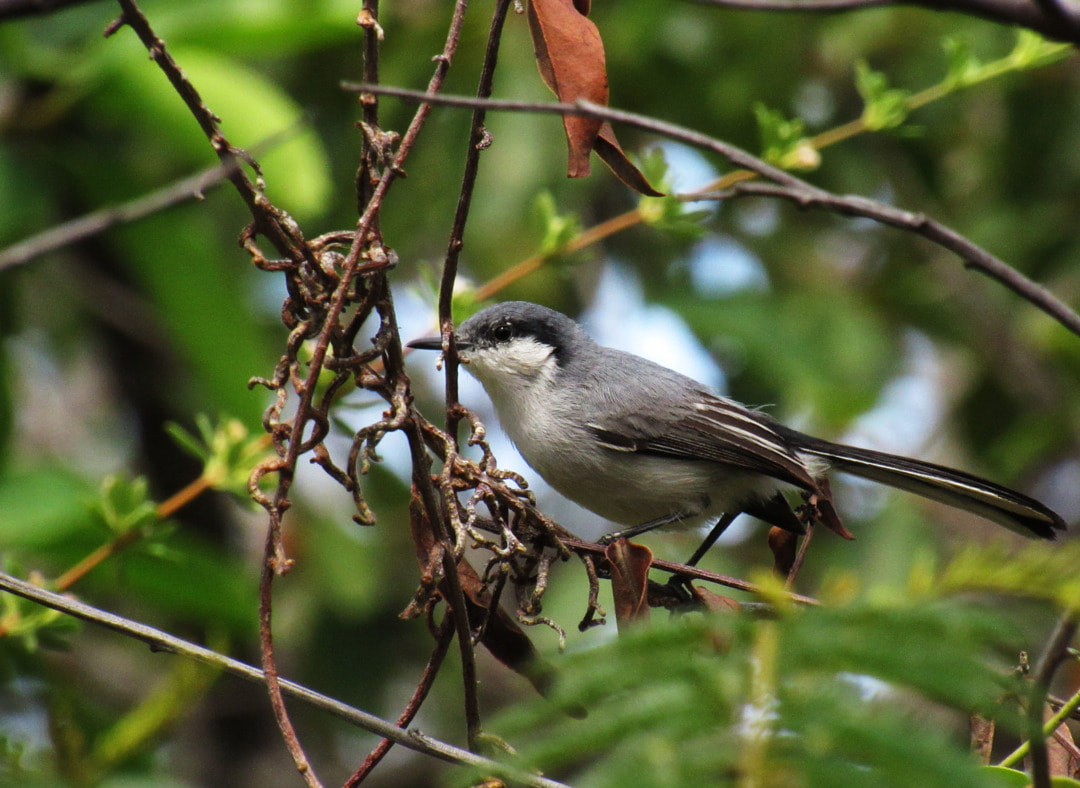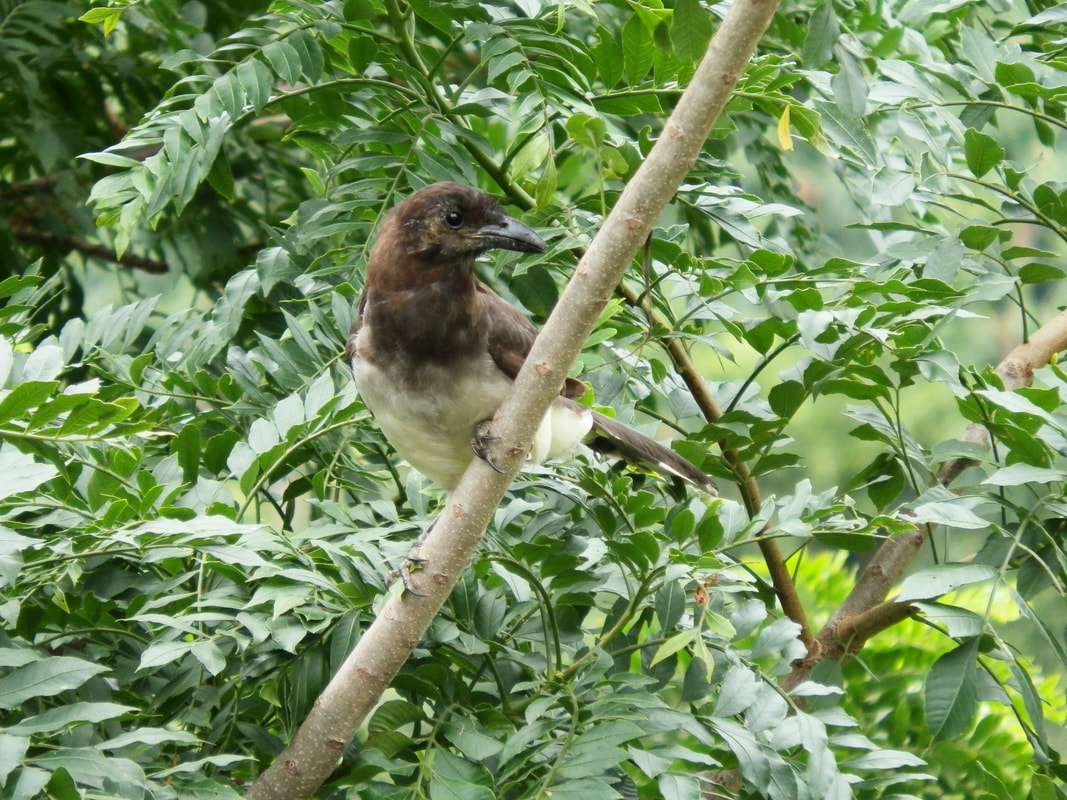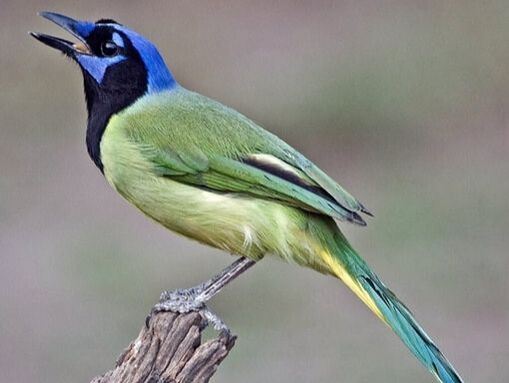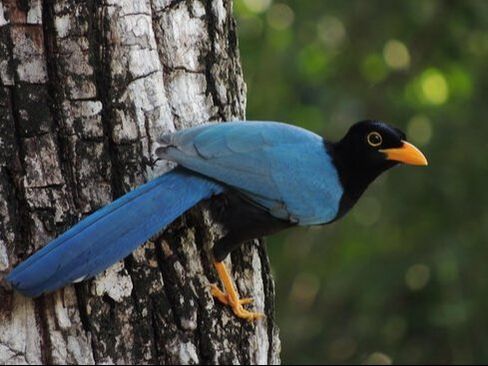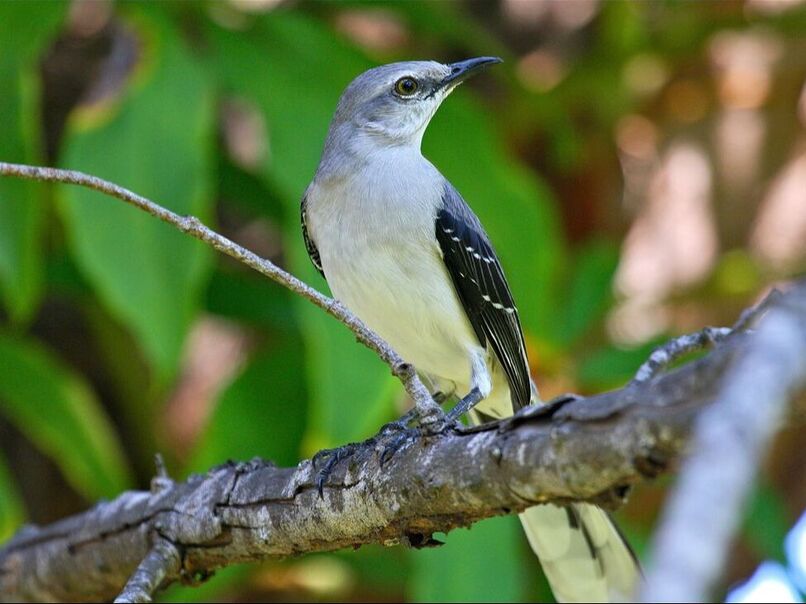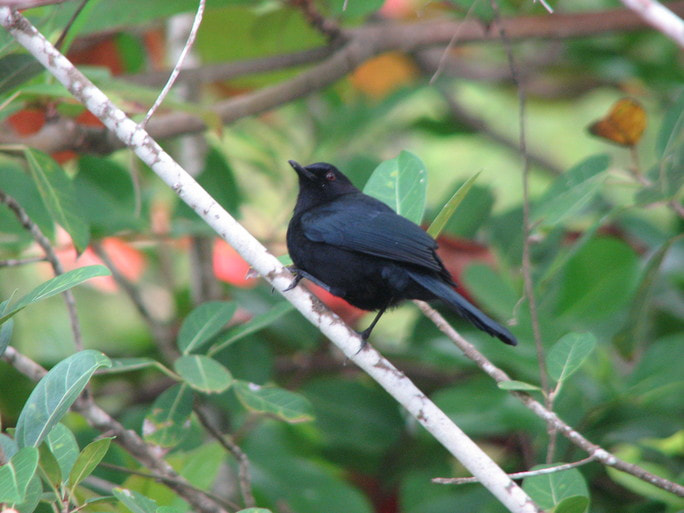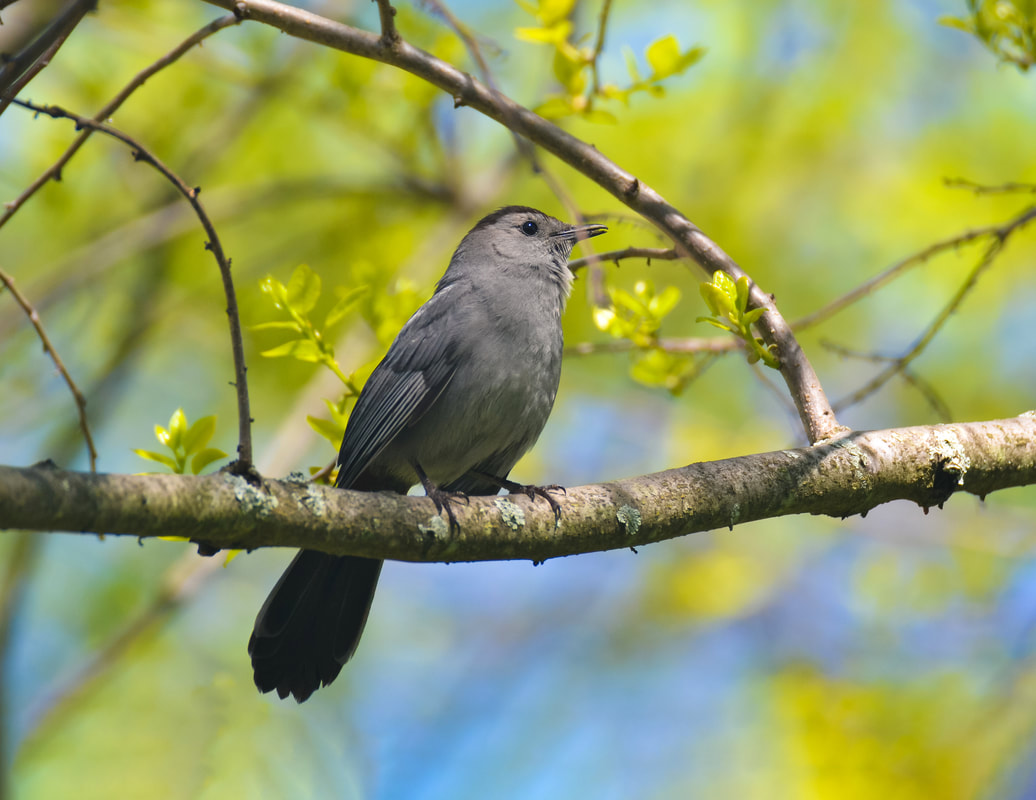Gnatcatchers & Jays - in Belize
Blue-Gray Gnatcatcher
Blue Gray Gnatcatcher - Tiny, long-tailed, with a thin bill. Soft blue-gray upperparts and slightly paler underparts. Note the thin white eyering. Males have black forehead. Forages for insects with diverse songbird flocks in a variety of wooded or brushy habitats. Active and twitchy; tail often seems loose. When separating from Black-tailed Gnatcatcher, try to confirm tail pattern from below: nearly all white, not black.
BELIZE HABITAT - Resident population restricted to pine and pine-oak woodland and savannas, locally in calabash-palmetto savannas without pines. Migrants may be found in any wooded habitat. Where can I find this bird in Belize? Common resident in north east Corozal and north Orange Walk, more widespread from east Orange Walk and most of Belize south (east of Maya Mountains) to northeast Toledo; also fairly common in Mountain Pine Ridge. Resident population suplemented with migrants from North America in winter (Sept. to April). |
Tropical Gnatcatcher
Tropical Gnatcatcher - Tiny gray and white bird with cocked tail. Fairly common in humid tropical forest canopy, often traveling with mixed-species flocks. Both sexes have a thick white eyebrow and ‘open’ face, unlike the narrow white eyebrow of White-lored Gnatcatcher. Male cap is black, female cap gray. Only other gnatcatcher likely to occur in the same areas is Blue-gray, which has a very different face pattern, with its white eyering.
BELIZE HABITAT - Midlevels to canopy within broadleaf forest interior and edge. Where can I find this bird in Belize? Fairly common resident on mainland in south, becoming increasingly uncommon and local northward. |
Brown Jay
Brown Jay - Well-named: this distinctive large jay is the color of dark chocolate with paler grayish belly. Sexes alike; juveniles similar to adults but with yellow legs, bill, and eyering. Long tail and floppy flight with deep wingbeats. Common and conspicuous in Mexico and Central America, with very limited range in U.S. Found in small groups in wooded habitats, often near water. Sometimes seen at bird feeders. Listen for very loud calls "kleer, Kleer, kleer."
BELIZE HABITAT - Midlevels to canopy within most forest types, usually near forest edge (absent from interior of larger forest tracts); open country with scattered trees. Where can I find this bird in Belize? Common to very uncommon resident on mainland; possibly resident also on north Ambergris Caye, where seen occasionally. |
Green Jay
Green Jay - Striking jay with lime-green body, yellow outer tail feathers, and black-and-blue head. Slightly smaller than other jays. Usually found in flocks in open woodland with brushy understory. Visits feeders for fruit and seeds.
BELIZE HABITAT - Midlevels within broadleaf and pine forest interior and forest edge. Where can I find this bird in Belize? Uncommon to fairly common resident on mainland away from coast. Most plentiful in Mountain Pine Ridge. |
Yucatan Jay
Yucatan Jay - Common and conspicuous in woodland and forest edge of Yucatan Peninsula, where there are no similar species. Usually found in groups of 5-25 birds, often chattering noisily. Black and bright blue plumage is distinctive. The bill is black on adult birds, yellow on juveniles and 1st-year birds. The striking white bodied juvenile plumage is held for only a few weeks in late summer before being replaced by adult-like black feathering.
BELIZE HABITAT - Midlevels within semi-deciduous and deciduous broadleaf forest, pine and pine oak forest, forest edge. Where can I find this bird in Belize? Common to very uncommon resident in Corozal, progressively less common south to south Orange Walk, north east Cayo, south Belize and extreme northeast Stann Creek; also resident on north Ambergris Caye. Recorded one each on Placencia Pen., Stann Creek and near silk Grass Stann Creek, indicating occasional southward dispersal. |
Tropical Mockingbird
Tropical Mockingbird - Tropical counterpart to Northern Mockingbird of North America. Common and often conspicuous in open and semi-open lowland tropical areas, perching on roadside wires and bare snags. Silvery gray above and whitish below with a long rounded tail that is black with a bold white tip. Lacks the big white wing patches of Northern Mockingbird, and the ranges of the two species do not really overlap. Varied calls and loud mimic song is much like Northern Mockingbird.
BELIZE HABITAT - Most open country, including towns and villages, open pine woodland, savannas, pastureland, orchards, and other areas with scattered shrubs and trees. Where can I find this bird in Belize? Distribution complex. On mainland, common resident in Corozal, all but west Orange Walk throughout Belize, northeast Cayo, north and east Stann Creek, and northeast Toledo. In autumn and winter, small numbers disperse into southwest Orange Walk, west Cayo and south Toledo. Common resident on Ambergris Caye, Caye Caulker, and Turneffe Islands; strays (or formerly resident?) at Lighthouse Reef and Glovers Reef. |
|
Black Catbird - Slender-billed, glossy black bird of humid forest, woodland, thickets, and overgrown clearings; shape and habits like Gray Catbird of North America. Common on Cozumel Island, but generally uncommon to rare on the Yucatan mainland. Often sings from a prominent perch, but otherwise rather retiring and easily overlooked, mainly at low levels in bushes; also hops on the ground, flipping and fanning its tail. Told from other black songbirds in its geographic range by habits and slender bill.
BELIZE HABITAT - On cayes, understory and midlevels within littoral forest; on mainland, semi-deciduous to deciduous forest interior and edge. Where can I find this bird in Belize? Common resident on Ambergris Caye and Caye Caulker; uncommon to locally common on mainland west to east Orange Walk and south to central Belize, once each near Gallon Jug Orange Walk and Monkey River Toledo. Formerly resident on Lighthouse and Glovers Reefs. Numbers may be increasing locally on mainland. |
Gray Catbird - Medium-sized songbird, smaller than a robin, with a smooth gray body, black cap, and rusty-red undertail. Sometimes mimics other species in complex, jumbled song. Prefers dense shrubs and small trees in forest edges, streamside thickets, and old fields. Occasionally feeds on suet.
BELIZE HABITAT - Understory to midlevel strata at forest edge (occasionally interior); second-growth scrub. Frequents fruiting trees, where often seen in canopy as well as other strata. Where can I find this bird in Belize? Common winter visitor, late September to early May. |

